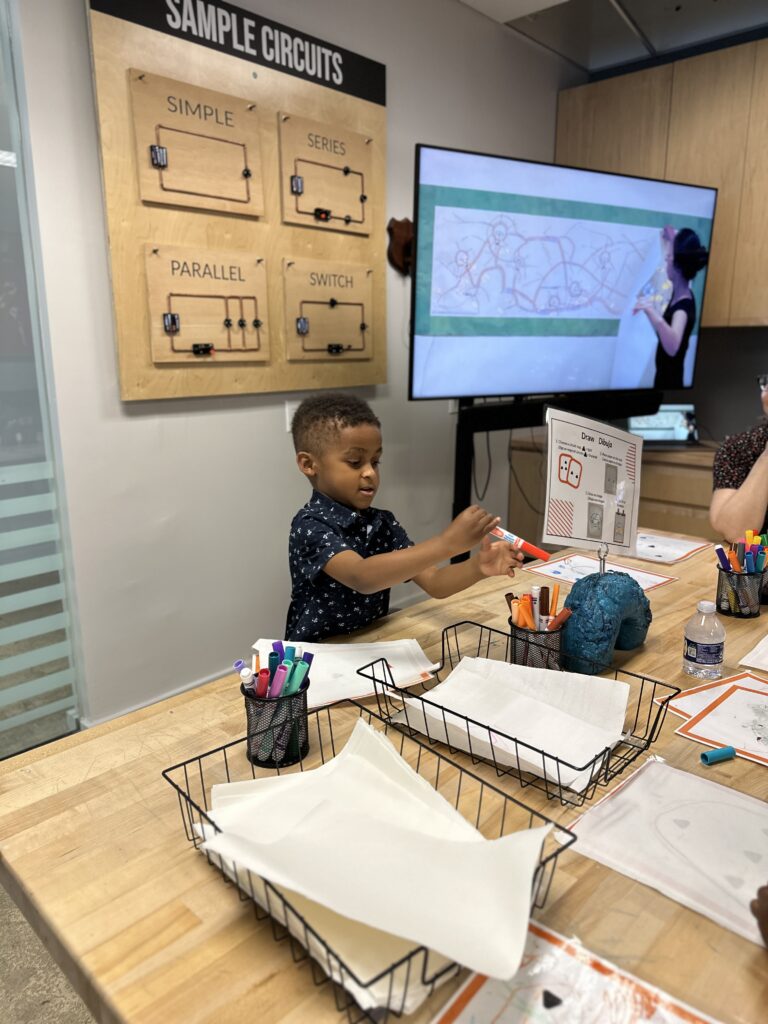
On Sunday, 18 May 2025, visitors to KID Museum in Bethesda, Maryland had an opportunity to learn about mangrove trees, origami, and paper circuitry, while being introduced to the achievements and creations of inspirational makers in STEM.
As part of their Asian American & Pacific Islander Community Celebration, KID Museum hosted Barbara Liedahl to oversee an interactive exhibit inspired by the artwork of our co-founder and CEO, Jie Qi.
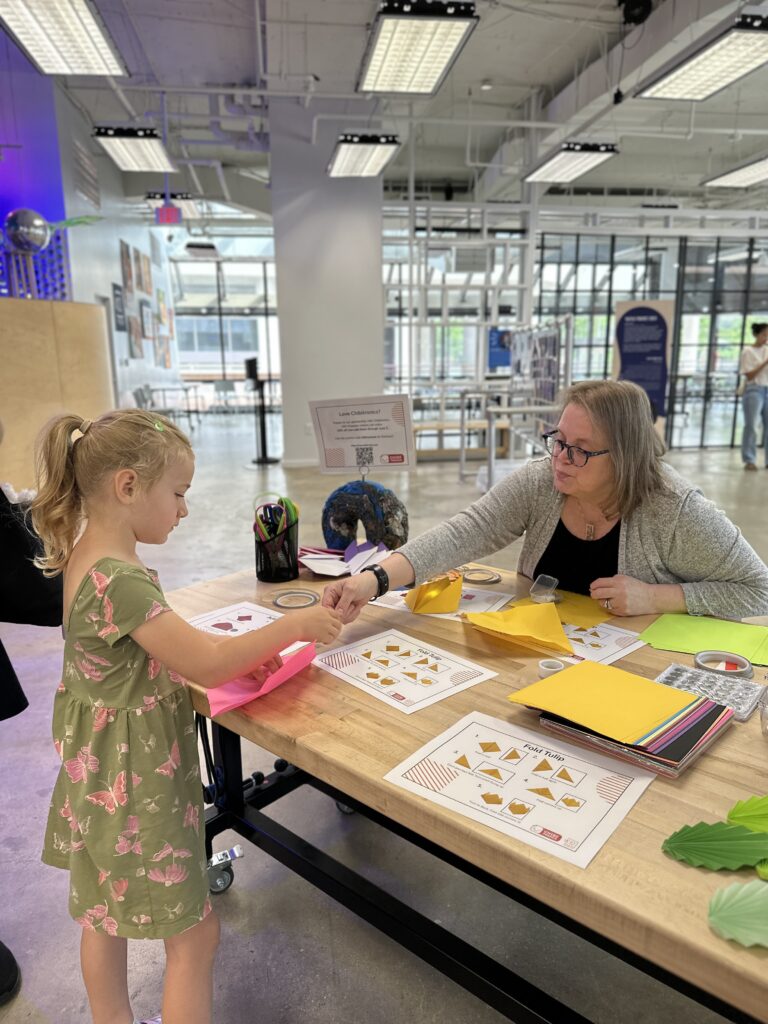
“I was located in the big area just off the entrance, and I invited children to make an origami flower with an integrated LED circuit to decorate a cardboard mangrove tree.
I helped participants, aged four to 10 years old, create their own flower.
I introduced Jie, directed parents to the display [about her work], and shared a bit about how Chibitronics materials are fun and easy to use…in being creative with technology.”
Why the Mangrove Tree
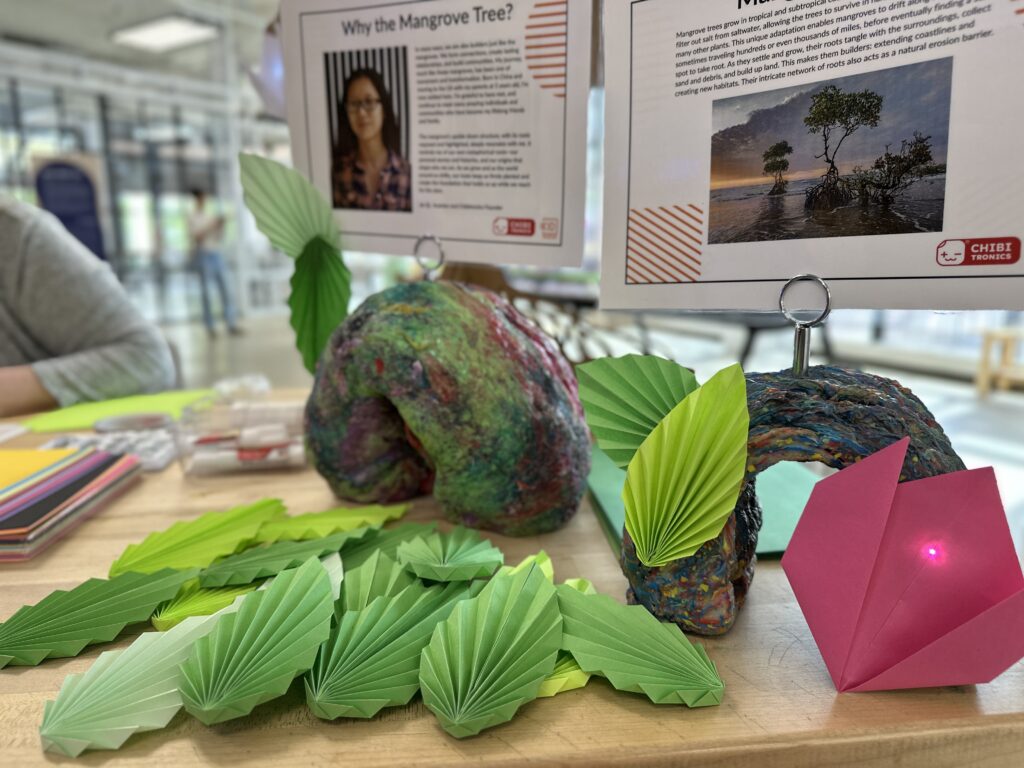
Mangrove trees have magical roots that can filter out salt from saltwater. This enables mangroves to drift along the ocean waves, sometimes traveling hundreds or even thousands of miles, before eventually finding a suitable spot to sprout and take root. As they settle and grow, their roots tangle with the surroundings, collect sand and debris, and build up land where there was once only water or sand. This makes them builders: extending coastlines and creating new habitats. Their intricate network of roots also plays a crucial role in protecting the shore from strong waves, acting as a natural barrier from erosion.
In many ways, we are also builders just like the mangroves. We form connections, create lasting relationships, and build communities. My journey, much like these mangroves, has been one of movement and transformation. Born in China and moving to the United States with my parents at 5 years old, I’m now settled here. I’m grateful to have met, and continue to meet, many amazing individuals and communities, who have become my lifelong friends and family.
The mangrove’s upside-down structure, with its roots exposed and highlighted, deeply resonates with me. It reminds me of our own metaphorical roots—our personal stories and histories, and our origins that shape who we are. As we grow and as the world around us shifts, our roots keep us firmly planted and create the foundation that holds us up while we reach for the stars.
—Jie Qi
Barbara, a long time collaborator of Chibitronics, recently retired from her role as an Instructional Specialist in Media Arts for a large school district in Maryland (Prince George’s County Public Schools) where she long supported teachers who wanted to combine technology and the arts. Since then, she has been keeping busy leading and presenting at national conferences, such as the National Association for Media Arts Education, and serving as an educational consultant for Chibitronics.
When Jie asked me if I would help with the celebration on May 18, because she could not attend, I jumped at the chance. I am happy to share the love Chibitronics has for youth and their creative endeavors. I am grateful for the opportunity to support this great work.

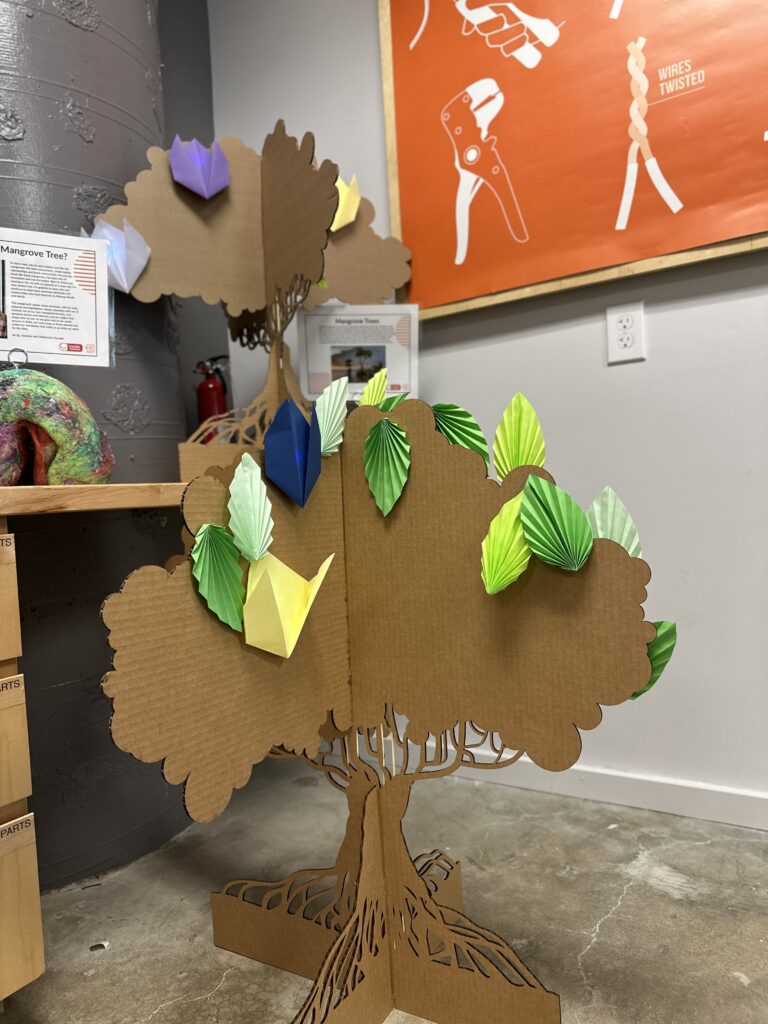
When recounting her experience, Barbara described interacting with over 20 children and their parents/guardians. In addition to teaching participants about paper circuitry, she had opportunities to educate people about battery safety and creating switches to extend battery life.
Every instance was successful; they each left with a working circuit inside their origami tulip, and were very proud! Some wanted to wear their creation and asked me to add the double-stick tape dot to the flower so they could stick it to their shirt! Others wanted to save the battery’s power and asked how to create a switch so they could activate the LED when they wanted rather than having it illuminated full time. They understood that the battery wouldn’t last forever. I assured them that with it being connected with just one LED, the battery should last at least a week and sometimes, I’ve had them shining, albeit a bit dim, for upwards of a month! I also reminded the “grown up helpers” that the coin cell batteries are a swallowing hazard and that they should make sure the battery doesn’t go into mouths.
When asked about her past involvement with KID Museum, Barbara had plenty of stories to share.
“For three years (2014, 2015, and 2016) I participated in the Silver Spring Maker Faire, sponsored by the KID Museum. There, I introduced The Art and Science of Felting with Wool—where young people learned how to make a felted coaster or picture with wool roving, soapy water, a plastic sandwich bag, and a lot of elbow grease!

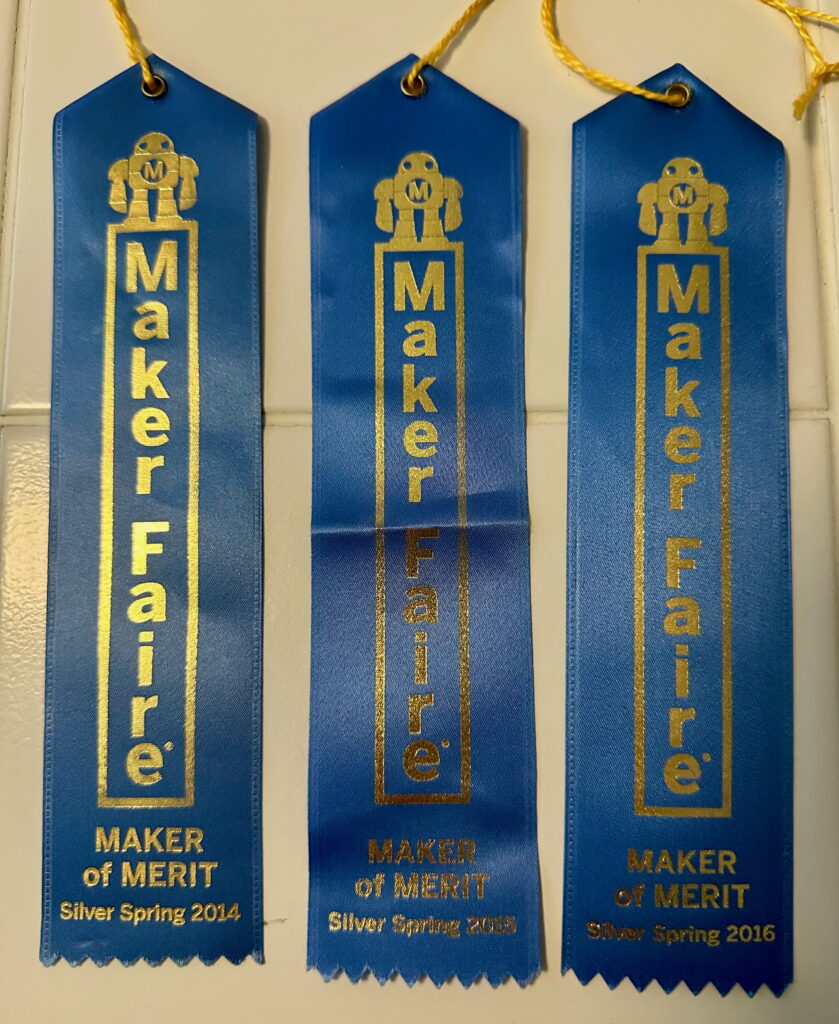
I recently found my three blue ribbons I received for being a ‘Maker of Merit.’ I’ve had those ribbons displayed on my refrigerator since then! I’ve followed KID Museum ever since. I love seeing how they’ve grown over the years. Their commitment to children and bringing the maker mindset to every child, including those ‘in the margins,’ makes me very proud to know them and support them.”
To learn more about the interactive exhibits highlighting different makers, creators, and local community groups continuing through the month of May, visit KID Museum.
Barbara Liedahl, will be co-teaching our annual Summer Pathfinders Course this July. Pathfinders is an online professional development course, generously sponsored by Infosys Foundation USA, which is opened to US based public and charter school teachers and librarians. To learn more, visit Registration for Summer Pathfinders is Open.
